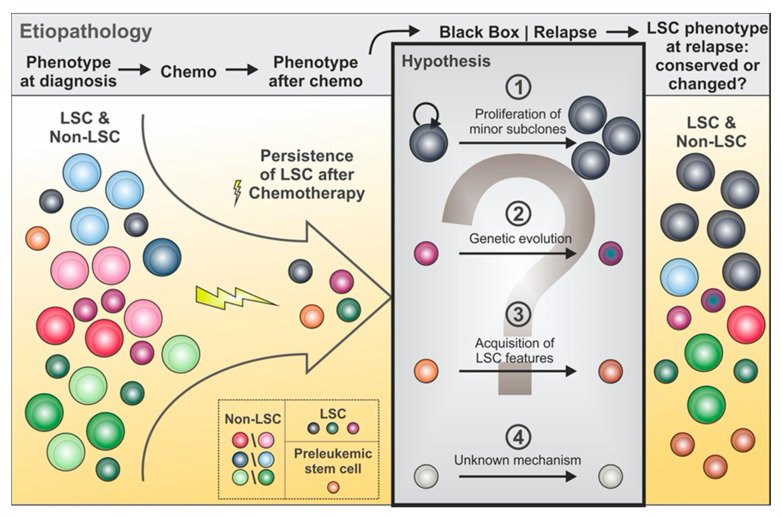Figure 2.
AML evolution and LSC heterogeneity after therapy. At diagnosis, various leukemic (sub)clones with corresponding LSC and non-LSC subpopulations may co-exist next to healthy and pre-malignant HSPC. Sensitivity to treatment varies between such cells, resulting in the elimination of non-LSC and potentially selection of (sub)clones and their corresponding LSC. Relapse may be driven by persistent LSC from the main (sub)clone(s) or from LSC from minor subclones that at diagnosis remained undetectable but then grow out to drive relapse. Furthermore, genetic evolution might occur conferring growth advantages to LSC and perhaps changing their surface phenotype. Finally, new leukemic clones can develop through acquisition of further mutations in the pre-malignant HSPC; disease "relapse" is in this case driven by de novo leukemic clones.

